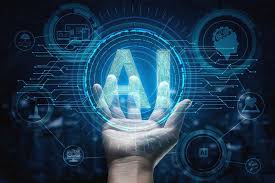Introduction of Chatgpt
The Advancement of ChatGPT: Exploring AI-Driven Conversations
Artificial intelligence has evolved rapidly, and chatbots have become an essential aspect of this technological leap. ChatGPT, crafted by OpenAI, stands as one of the most cutting-edge AI-powered chatbots, transforming how we engage with machines. Whether for casual discussions, expert guidance, or creative brainstorming, ChatGPT has revolutionized AI-human interactions.
Who Created ChatGPT and When Was It Released?
ChatGPT was designed by OpenAI, an AI research organization established in 2015 by Elon Musk, Sam Altman, Greg Brockman, Ilya Sutskever, and others. The company’s goal is to develop artificial intelligence that serves humanity.
 |
| Elon Musk |
ChatGPT operates on OpenAI’s Generative Pre-trained Transformer (GPT) framework. The first GPT iteration emerged in 2018, followed by improved versions. ChatGPT officially launched in November 2022, powered by GPT-3.5, with a more refined version, GPT-4, introduced in March 2023.
How Does ChatGPT Function?
ChatGPT employs deep learning and natural language processing (NLP) to interpret and generate human-like replies. Here’s how it operates:
- Training Phase – It is pre-trained on vast datasets, including books, articles, and online content.
- Fine-Tuning – It undergoes reinforcement learning with human feedback (RLHF) to improve accuracy and mitigate bias.
- Input Analysis – It examines user prompts, detects patterns, and selects the most relevant response.
- Response Generation – Based on probability, the model produces fluent, coherent, and contextually appropriate replies.
Why is ChatGPT Widely Used?
ChatGPT’s flexibility and user-friendly design make it incredibly popular. Key reasons include:
- Conversational Fluency – It generates responses that feel natural and engaging.
- Diverse Applications – Useful for writing, tutoring, programming, customer service, and beyond.
- Continuous Updates – OpenAI frequently refines ChatGPT to enhance reliability and accuracy.
- Seamless Access – Available through websites, mobile applications, and APIs.
- Customizable Interactions – Users can adjust responses based on their needs.
- Multilingual Capability – It supports multiple languages, making it globally accessible.
- 24/7 Availability – Unlike human assistants, ChatGPT remains operational at all times.
How to Use ChatGPT
ChatGPT is easy to use, even for beginners. Here’s how:
- Visit OpenAI’s Website – ChatGPT is accessible via OpenAI’s platform.
- Download the ChatGPT App – Available on mobile for convenient use.
- Utilize API Integration – Developers can incorporate ChatGPT into websites, applications, and business services.
- Input a Query – Users submit a question, request, or command, prompting ChatGPT to generate a response.
- Refine Responses – Users can modify queries for more precise answers.
Industries Benefiting from ChatGPT
ChatGPT’s efficiency spans multiple industries, boosting productivity and innovation:
- Education – AI-powered tutoring, language learning, and academic assistance.
- Healthcare – Chatbots assisting with medical guidance, mental health support, and patient interactions.
- Business & Marketing – Automating customer service, content generation, and marketing strategies.
- Software Development – Aiding programmers in coding, debugging, and documentation.
- Creative Fields – Assisting writers, artists, and musicians in idea generation and content creation.
- E-commerce – Enhancing product recommendations, order tracking, and customer support.
- Finance & Banking – Helping users with financial advice, fraud detection, and account management.
Limitations and Challenges of ChatGPT
Despite its advanced capabilities, ChatGPT faces some hurdles:
- Accuracy Concerns – Responses may sometimes be incorrect or outdated.
- Contextual Limitations – Struggles with lengthy or highly nuanced conversations.
- Data Privacy Risks – Users must be cautious when sharing sensitive information.
- Bias in Responses – ChatGPT’s outputs may reflect biases present in its training data.
- Lack of Emotional Intelligence – It mimics human conversation but lacks genuine emotional understanding.
The Future of ChatGPT
Future of Chatgpt

OpenAI is committed to advancing ChatGPT’s accuracy, contextual awareness, and security. Future enhancements may include:
- Enhanced Real-Time Learning – Enabling ChatGPT to adapt dynamically to interactions.
- Improved Emotional Intelligence – Strengthening empathetic and situational awareness in responses.
- Stronger Privacy Protections – Enhancing data security and user confidentiality.
- Expanded AI Integration – Merging ChatGPT with other AI tools for more advanced automation.
Final Thoughts
ChatGPT is a game-changing AI innovation, transforming how humans interact with artificial intelligence. Its ability to hold meaningful conversations, assist in various industries, and continuously evolve makes it an invaluable tool for individuals and businesses. As AI technology progresses, ChatGPT is set to become even more intelligent, versatile, and indispensable in our daily lives.




Comments
Post a Comment